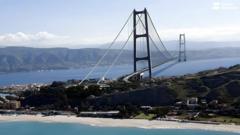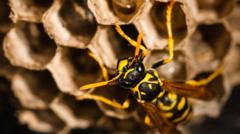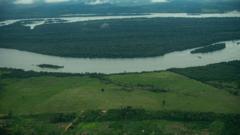The iconic Kosmos 482 spacecraft, launched in 1972 by the Soviet Union, is stirring up excitement as it reportedly re-enters Earth's atmosphere after being stuck in orbit for over five decades. Though it was intended for Venus, the probe broke into four pieces and remained encased in our orbit, with one fragment—most likely the lander capsule—re-entering around 06:16 GMT last Saturday.
Experts are still piecing together the details this atmospheric descent, as it remains uncertain whether the fragment fell to the ocean or disintegrated in the fiery entry. Notably, because about 70% of Earth is sea-covered, any possible damage from the piece of space debris is considered low-risk.
Stijn Lemmens, a senior analyst with the European Space Agency, highlighted that this type of re-entry occurs frequently. "It's much more likely that you win the lottery than that you get impacted by this piece of space debris," he noted. The lander’s robust design, originally engineered to withstand the harsh conditions of Venus, means it may have survived the journey despite having a degraded parachute system after being in space for so long.
International space agencies continue to monitor Kosmos 482's remains, reflecting on the need to design future spacecraft that can safely remove themselves from orbit. Controlled re-entries are key for minimizing risks to populated areas and managing the environmental repercussions of space debris. With daily occurrences of smaller items burning up and larger spacecraft re-entering about weekly, understanding this phenomenon is crucial for future space exploration endeavors.
Experts are still piecing together the details this atmospheric descent, as it remains uncertain whether the fragment fell to the ocean or disintegrated in the fiery entry. Notably, because about 70% of Earth is sea-covered, any possible damage from the piece of space debris is considered low-risk.
Stijn Lemmens, a senior analyst with the European Space Agency, highlighted that this type of re-entry occurs frequently. "It's much more likely that you win the lottery than that you get impacted by this piece of space debris," he noted. The lander’s robust design, originally engineered to withstand the harsh conditions of Venus, means it may have survived the journey despite having a degraded parachute system after being in space for so long.
International space agencies continue to monitor Kosmos 482's remains, reflecting on the need to design future spacecraft that can safely remove themselves from orbit. Controlled re-entries are key for minimizing risks to populated areas and managing the environmental repercussions of space debris. With daily occurrences of smaller items burning up and larger spacecraft re-entering about weekly, understanding this phenomenon is crucial for future space exploration endeavors.





















